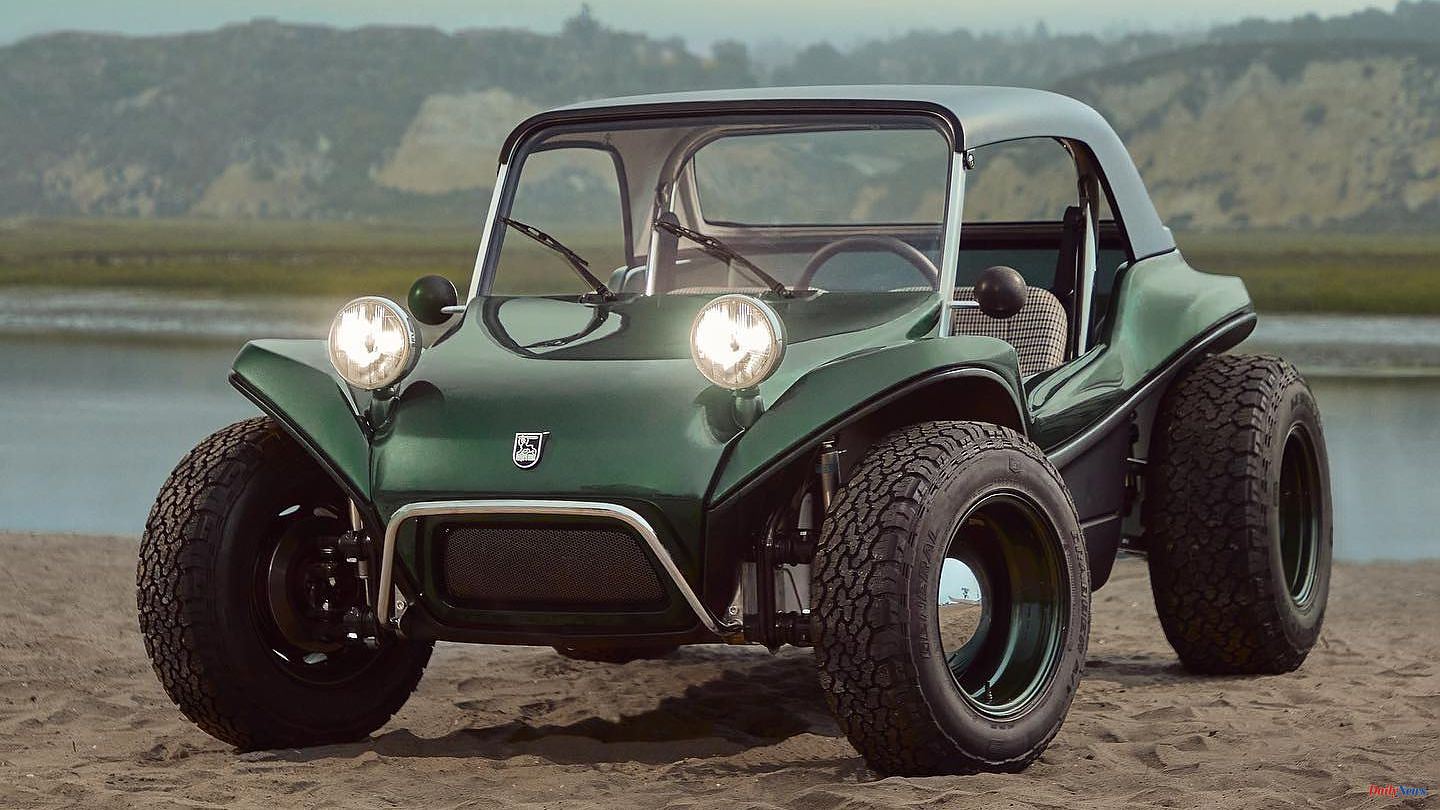After almost 60 years, the VW buggy is making a comeback. The legendary vehicle that drove through dunes and beaches in California in the 1960s is coming onto the market as an electric car. US manufacturer Meyers Manx unveiled the Meyers Manx 2.0 at an event in Malibu on Monday.
"It's a symbol of fun, purity and simplicity, and it also represents the optimism of 1960s California - and we want to bring that back," Philip Sarofim told Tech Crunch. Sarofim is CEO and Founder of Trousdale Ventures, the VC firm that bought the automaker in 2020. The second generation of the electric buggy should hardly appear to have changed in appearance. In fact, apart from the headlights, everything has changed compared to its predecessor, says Sarofim. It looks like a hard top will replace the fabric roof and the rims are chromed in the middle. The technology of the buggy no longer comes from the VW Beetle, on which the first generation of vehicles was based.
The Meyers Manx 2.0 will be available in two variants: a 20 kWh lithium-ion battery with an estimated range of around 150 miles (240 kilometers) and a 40 kWh lithium-ion battery with an estimated range of 300 miles (about 480 kilometers). For a buggy, which is not intended for longer distances, that should be sufficient. Charging takes place with a 6 kW on-board charger, but there is also an optional fast charging function for 60 kW direct current. With the small battery, the buggy weighs an estimated 680 kilograms, with the larger battery it is around 70 kilograms more.
The Meyers Manx 2.0 has two electric motors on the rear wheel axle, which should ensure quite sporty properties. In tests, the top version with a good 200 hp and 325 Newton meters of torque is said to have accelerated from 0 to 100 km/h in 4.5 seconds. The manufacturers plan to announce more details about the vehicle at The Quail Motorsports Gathering event in California later this month.
The buggy is certainly not intended as a first car. Rather, it is aimed at wealthy people and collectors who buy the electric vehicle as an additional car. It is still unclear what the Meyers Manx 2.0 will cost.
In 2014, the company - then still owned by founder Bruce Meyers - built an electric prototype of the buggy. In 2019, VW presented the ID. Buggy based on Meyers Manx. However, the concept stayed the same. Now the plans are obviously to be put into practice. Venture capitalist Phillip Sarofim and well-known car designer Freeman Thomas, who helped design the Audi TT and VW New Beetle and is now CEO and manager of Meyers Manx, want to ensure that the buggy really gets to market.
Where exactly the electric car will be built is not known. However, the company says it has partnered with a "US-based manufacturing unit." Next year, 50 buggies are to be produced in a beta version, and the company then wants to mass produce in 2024. After the Manx 2.0, other vehicles are to come onto the market in the next few years. But first it's time to revive the buggy.
Sources: Tech Chunch, Insideevs












